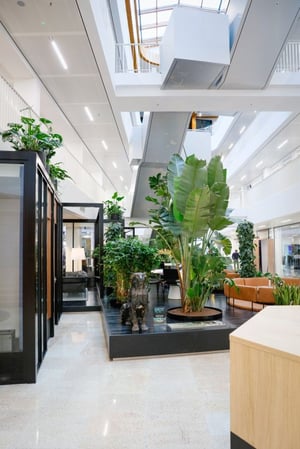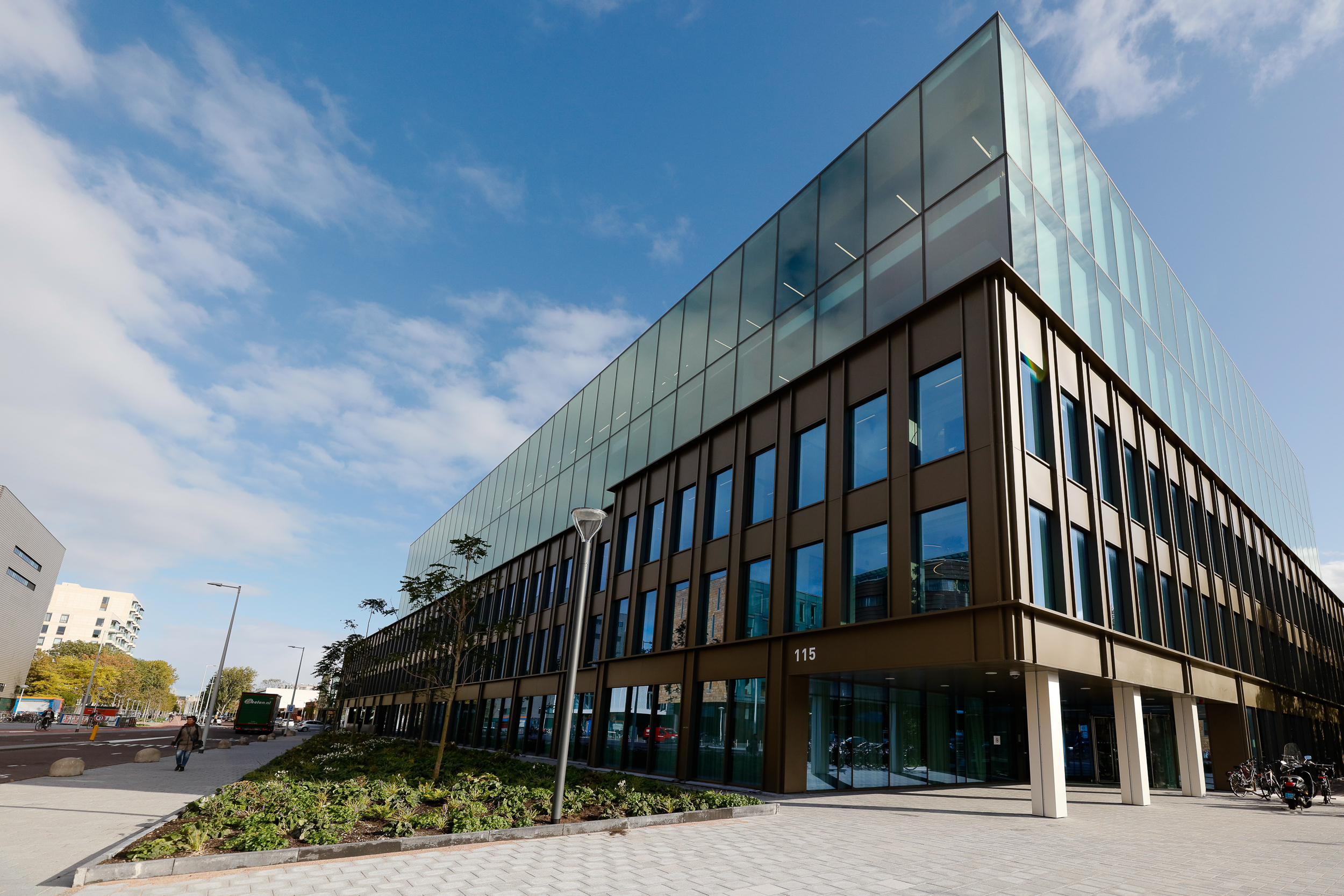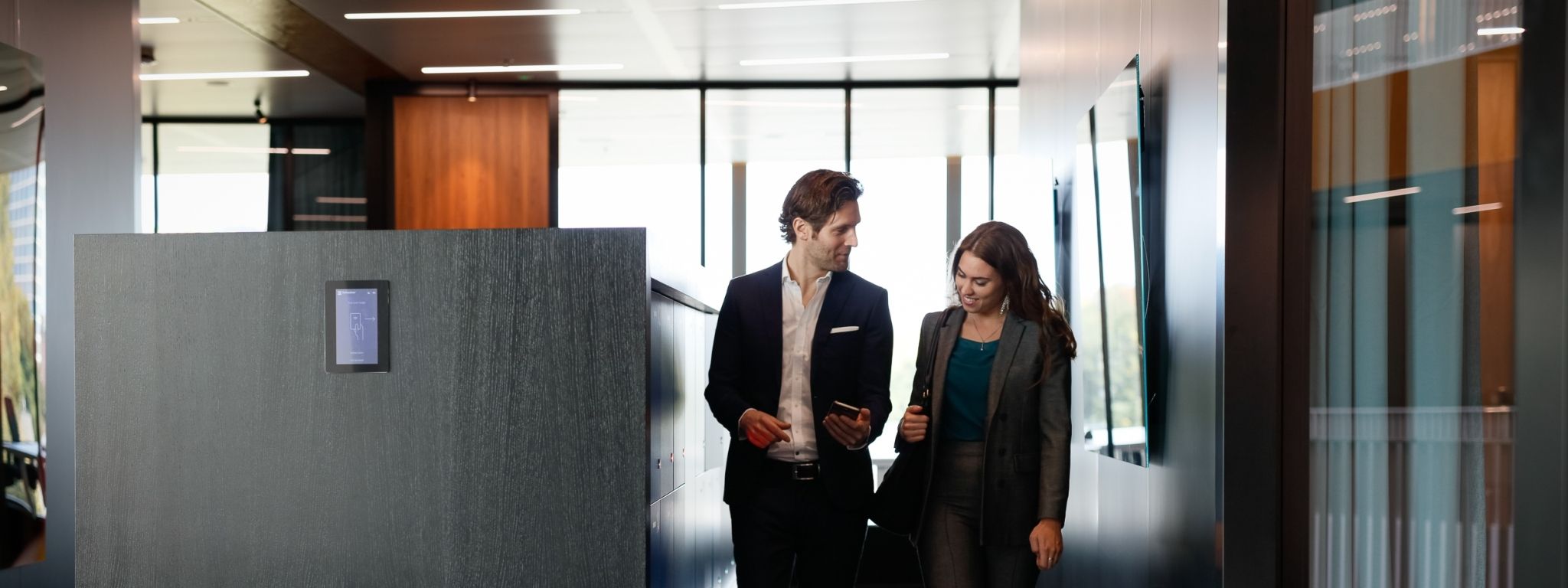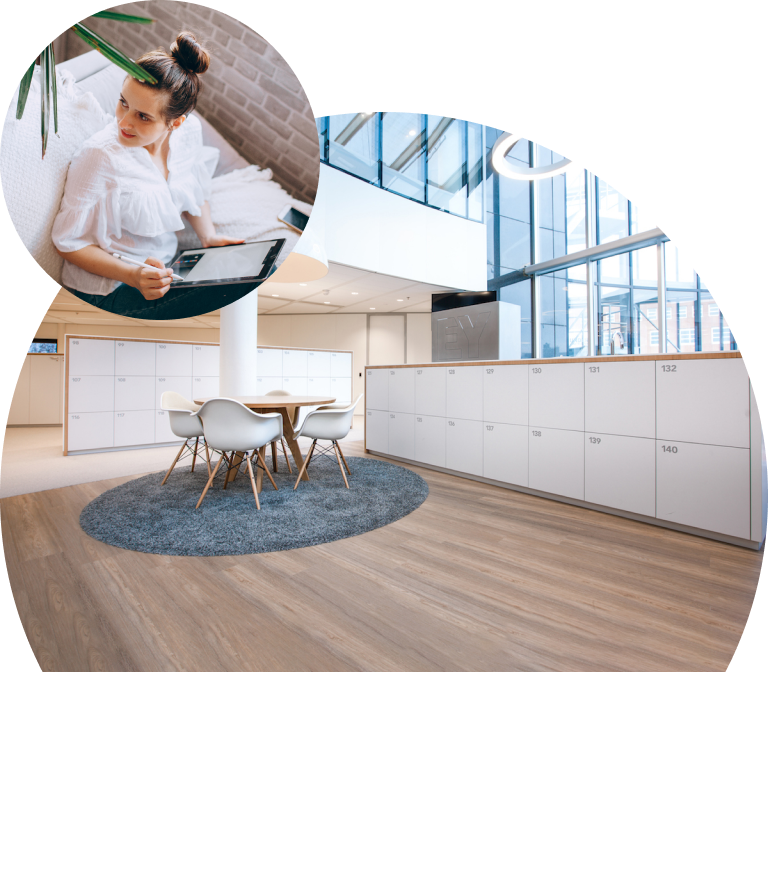The workplace keeps changing and new insights for creating the best workplace are presented every day. The ultimate goal for a building, facility manager or real estate manager is to create and maintain ‘the’ workplace which empowers your employees to be at their best.
Unfortunately, there’s no such thing as a pre-defined workplace solution that fits all. Your workplace requires a tailor-made plan that comprises the unique demands and desires of your own employees.
Nowadays one of the first steps in the transformation of many workplaces is to create a so-called smart workplace strategy. One of the reasons being that many researches have shown that transforming your workplace towards a smart workplace brings many benefits for both the employee and the company.
What is a smart workplace?
A smart workplace is a workplace where technology enables people to work better, faster and smarter. It should facilitate the diversity in work and enable people to work in a space that’s suited to their needs. Beacons, sensors and mobile apps help employees perform menial tasks better and faster, so they have enough time to focus on growing businesses and innovating.
By using, for example, a workplace application that shows an interactive floorplan users can easily see which desks are occupied by whom, where there is locker space available and which meeting rooms are free in the desired area. Furthermore, in a smart office, technology also helps people communicate better. Technology facilitates people to interact, share information and work easier in teams and the use of smart applications can make it a lot more convenient to work remote.

The smart workplace vs. the digital workplace
It’s worth to mention the term ‘digital workplace’ as well. From our perspective, the smart workplace is an extension to the digital workplace. There is no such a thing as an unambiguous comprehensive definition. Some refer to the digital workplace as ‘an individual person’s personalized, customized collection of computerized devices, commonly used software and connectivity solutions.’
Paul Miller, who wrote the book ‘The Digital Workplace: How technology is deliberating’, and defines it as “The digital workplace is the virtual, digital equivalent of the physical workplace. We believe that the digital workplace represents the online platform that enables people to work remotely, and that allows people to access files and systems anytime and from any location.”
The smart workplace goes a step further, since it includes the physical workplace as well, and the technology and innovations that make it more intelligent and efficient. Therefore we think you could say that the smart workplace is a digital workplace, but the digital workplace isn’t automatically a smart workplace. However, you will notice that these two terms are often used interchangeably.
Big data collected in Building Management Systems
The data collected in a smart workplace are collected by IoT (Internet of Things) devices. IoT devices are changing the way we think about office design, the employee experience and creating environments for optimum productivity and creativity. The data that’s coming from these devices are managed in building management systems (BMS).
Intelligent dashboards help you to draw clear conclusions from the measurements in the building. The filtered data helps the company to make smart decisions regarding their office design. So it’s fair to say that IoT plays a crucial role in smart buildings.
We discussed what a smart workplace is and how it works, let’s now take a look at the reasons why you should consider a smart workplace.
JLL’3-30-300 model
JLL provides the ‘3-30-300’ model, which could be used as a basis of value for quantifying potential benefits. Within their model, potential savings guidelines are presented as follows: $3 per square foot for energy savings, $30 per square foot for space utilization/optimization savings and $300 per square foot pertaining to improving employee effectiveness.
Although each category of savings is important, the potential benefit of $300 per square foot gives credence to today’s focus on improving employee effectiveness in the workplace.
With staff costs, including salaries and benefits, typically making up about 90% of a business’ operating costs, it makes sense that even marginal improvements to the employee productivity can turn into significant overall commercial gains.
Read More: How to define, create and benefit from a smart workplace
Benefits of a smart and dynamic workplace
1. Improved productivity
Multiple research reports show that companies that invest heavily in developing modern and state-of-the-art infrastructure benefit from increased productivity and overall growth. A high-tech workplace is a new way to boost up the level of creativity and innovation at your workplace.
Research towards smart buildings by Gartner showed that: “97 percent of respondents said that the workplace was critical to employee productivity and also had a significant impact on employee happiness.”
2. Improved work environment
A peaceful and productive work environment results in high output and achievement of business objectives. A smart workplace provides benefits for both the company (real-time data analysis, cost reductions) and the employee (more freedom in when and where to work, better work/private balance).

3. Improved sustainability
Smart buildings have the perfect tools to measure and optimize the use of energy through the building. Smart buildings systems can cover energy in the forms of electricity, heating, and cooling, thus offering building owners various opportunities to reduce cost as well as to increase energy efficiency and secure energy supply while reducing carbon emissions.
4. Time management
Time management is an indispensable element that determines the success or failure of any business. By implementing smart tools that save your staff time, you can improve productivity, which will increase your business results.
Imagine, if you could save each staff member 20 minutes per month by implementing software that e.g. helps them to find a suitable workspace, locker or meeting room faster. This means that on the yearly basis you save 4 hours. 4 hours may not sound like a lot, but multiply this by the number of people that work for your company and you will notice that even small upgrades create substantial profits.
5. Improved communication and employee retention
Quite often, lack of communication and poor information flow is the reason for poor performing organizations and businesses. Using high-tech equipment in the smart workplace enables stability and streamlined communication within your organization. Smart office solutions allow you to create a positive work culture that promotes harmony amongst your workforce and improves the overall employee retention of your company. In the next section, we will go more in-depth towards how you can attract and retain the best talents with your smart workplace.




